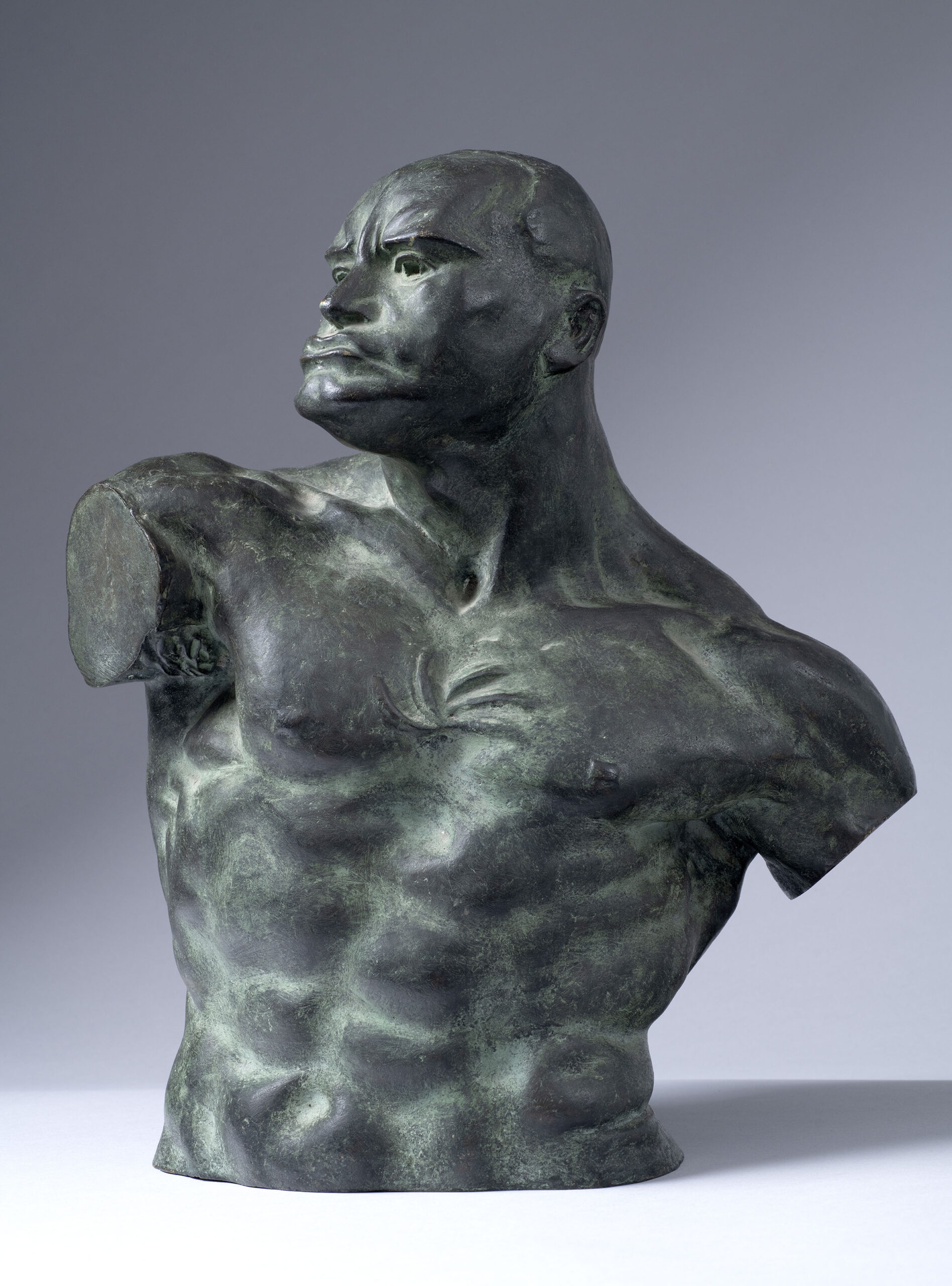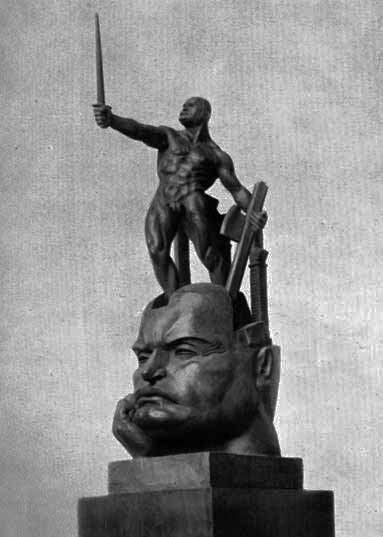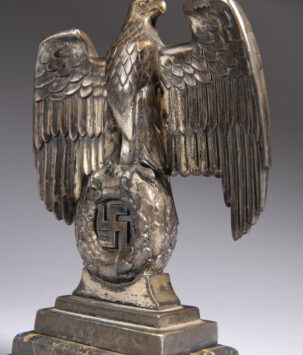Empire Springs from the Mind of the Duce
Principal part of a larger sculpture known as ‘L’Impero balza dalla mente del Duce’ (Empire Springs from the Mind of the Duce). Ferruccio Vecchi masterfully portrays Mussolini as the Fascist superman destined to lead Italy to glory. A strong cult of personality was constructed around Mussolini, not only to inspire loyalty to the Duce (leader) but for him to serve as an idealized vision for Italy’s ‘New Man’ and as a role model for the citizenry – particularly the youth – to strive towards.
The Nietzschean concept of the Übermensch is universally present in one form or another in all branches of right-wing thought. Fascism is rooted in, and represents, the most potent form of the so-called ‘master morality’ within Nietzche’s master-slave dialectic. The steeling of one’s own body was connected to a healthy spirit and promoted the idea of a strong, unified nation. In its unrelenting pursuit for self-improvement and a focus on man’s primal spirit, Fascism came to embody more than just a political ideology; it was a new conception of life. The cultivation of one’s physical prowess was an indispensable facet in creating the utopian vision of a ‘New Man’ who would harness the ultimate potential of the human race. While this took on racial connotations in Nazi Germany, it was a matter of culture above all else for the Italians.
The complete sculpture was displayed at the XXII Venice Biennale held in 1940, the rest of which is believed to have been lost.
Free shipping on orders over $50!
- Satisfaction Guaranteed
- No Hassle Refunds
- Secure Payments
Principal part of a larger sculpture known as ‘L’Impero balza dalla mente del Duce’ (Empire Springs from the Mind of the Duce). Ferruccio Vecchi masterfully portrays Mussolini as the Fascist superman destined to lead Italy to glory. A strong cult of personality was constructed around Mussolini, not only to inspire loyalty to the Duce (leader) but for him to serve as an idealized vision for Italy’s ‘New Man’ and as a role model for the citizenry – particularly the youth – to strive towards.
The Nietzschean concept of the Übermensch is universally present in one form or another in all branches of right-wing thought. Fascism is rooted in, and represents, the most potent form of the so-called ‘master morality’ within Nietzche’s master-slave dialectic. The steeling of one’s own body was connected to a healthy spirit and promoted the idea of a strong, unified nation. In its unrelenting pursuit for self-improvement and a focus on man’s primal spirit, Fascism came to embody more than just a political ideology; it was a new conception of life. The cultivation of one’s physical prowess was an indispensable facet in creating the utopian vision of a ‘New Man’ who would harness the ultimate potential of the human race. While this took on racial connotations in Nazi Germany, it was a matter of culture above all else for the Italians.
The complete sculpture was displayed at the XXII Venice Biennale held in 1940, the rest of which is believed to have been lost.












